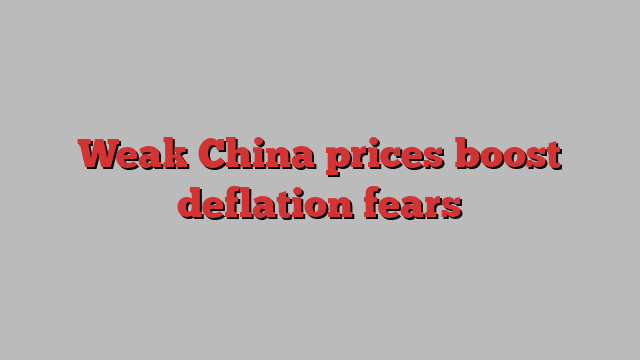
Stay informed with free updates
Simply sign up to the Chinese economy myFT Digest — delivered directly to your inbox.
China’s producer prices slid in August as concerns grow that deflationary forces are taking root in the world’s second-largest economy.
Industrial producer prices fell 1.8 per cent year on year, the most in four months, dragged down by the steel sector. This compares with a decline of 0.8 per cent in July and analysts’ expectations of a 1.4 per cent fall, official data showed.
China’s consumer price index, meanwhile, rose 0.6 per cent year on year, slightly below analysts’ expectations of 0.7 per cent in a Reuters poll but faster than July’s 0.5 per cent increase, the National Bureau of Statistics said on Monday.
Underlying deflation has become a leading concern for many observers of China’s economy, with the former central bank governor Yi Gang warning last week that China needed “proactive fiscal policy” and “accommodative” monetary measures to support demand.
China’s GDP deflator, the broadest measure of price changes in an economy, has been negative for the past few quarters, he said. A negative GDP deflator indicates deflationary forces in the economy.
Economists are concerned that if deflationary expectations become entrenched, investment could fall as margins come under pressure and local governments, consumers and companies concentrate on paying off loans.
China’s deep property downturn, now in its third year, has depressed domestic demand while intense competition in manufacturing is pushing down prices.
The August fall in producer prices was the biggest since April, when they declined 2.5 per cent year on year.
Dong Lijuan, chief statistician of the urban department at the National Bureau of Statistics, highlighted falls in prices of products generated by steel-related industries, agriculture, food processing and energy as among the causes of the decline in producer prices.
The August rise in CPI was the biggest since February, when prices jumped 0.7 per cent. But pork prices again played a role in the CPI rise, helping to drive up food prices by 2.8 per cent year on year compared with only 0.2 per cent for non-food prices.
Moody’s said in an analysis ahead of the figures that “households are keeping their spending tight in the face of falling property prices and a shaky job market”.
It said recent gains in pork prices had helped to prevent a return to outright deflation, but “make no mistake, underlying inflation pressures are negligible”. On industrial prices, it said: “Slower growth in industrial output has coincided with discounting to lure customers.”